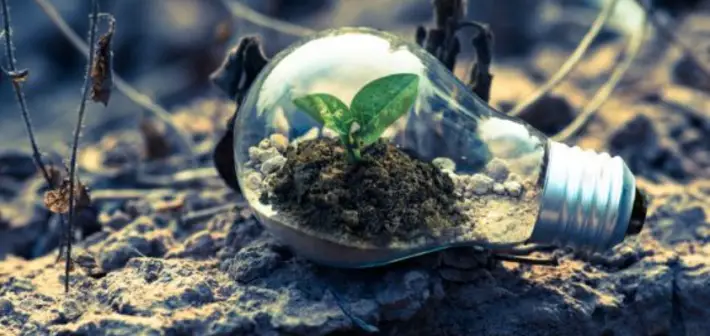5 Ways to Make Your Home More Eco-Friendly

The unpredictable weather situation in the UK over the past few months has caused everyone to be talking about the strange weather conditions. We’ve experienced everything from record breaking temperatures, to days on end of torrential rain, causing some terrible floods.
There is also the issue around the growing concerns of plastics and waste, where our planet is in danger more than ever before.
It’s everyone’s responsibility to get behind a sustainable lifestyle and do their bit to make a change, but not everyone knows where to start.
Today’s article sets out to guide you on several ways to make your home a solid starting point, by highlighting tips and advice on living eco-friendlier. Not only is an increased awareness around sustainability in the home going to help you do your bit for the Earth, it can also help you live a more toxic-free life in a greener, cleaner home.
Let’s explore some ways to get started today:
1. Reuse any containers you possibly can
When you look into it, you may own so many containers which can easily be re-used instead of thrown away. Plastic sandwich bags, washing tablet boxes and glass food jars are just a few that spring to mind.
If you already recycle your plastics and glass, then that’s a great start. However, have a think about how you can get more use out of these before tipping them into those coloured recycling bins. A nice glass jar can make for a pretty small vase in the bathroom, and a plastic tub can be used to keep condiments together, or even a place to store all your washing pegs in your utility room.
Think about what can be switched up and replaced too. For example, try to switch your plastic sandwich bags for silicone sandwich wraps. These are more durable in the long run, and you’ll get much more use out of them.
It’s little things like this that can contribute to ensuring our world isn’t always going to be overflowing with landfills.
2. Switch to natural bath, beauty and cleaning products
We’re now seeing a change in attitudes towards cleaning products, where slowly, more people are turning to chemical-free options rather than those filled with fragrances and dyes. The less chemicals we can be filling the air in our homes with, the better. And not just for the sake of the environment, but for our own health, too.
Try to do this with bath and beauty products, which not only means you are absorbing chemicals into your skin, but your bathroom will be littered with an array of plastic bottles.
Take some time to reconsider your bathroom, making it a relaxing, welcoming space in the home that encourages self-care and cleanliness. A tidy, elegant bathing area should be the focal point, not a worn-out bath which has seen better days and is cluttered with a lineup of half full plastic bottles. You can get lots of bathroom inspiration online, for example, take a look at Bathdisc with their variety of baths and basins. Then, look at using solid soap bars or large refillable glass bottles to store your liquids, to avoid a build-up of plastic.
3. Look at updating your lights to LED light bulbs
Although making the transition to LED light bulbs is on many people’s to-do list, it isn’t always a priority. It’s worth considering that incandescent bulbs, which are the traditional alternative bulbs many houses use, lose around 90% of their energy purely to heat as opposed to light. That’s an incredible amount!
This means that only 10% of energy is used to light up a room, which is terrible not only for electricity bills, but for increasing your carbon footprint.
By switching to LED light bulbs, these use just 10% of the energy that the incandescent light bulbs do. Once your LED bulbs reach the end of their life, which should be significantly longer than usual bulbs, they can be safely disposed across local recycling centres.
4. Invest in pure cotton bed sheets
When it comes to the end of the day and it’s time to dive into bed, you probably don’t give too much thought on the type of bedding you have around you. However, There are many bedding retailers and manufacturers out there that sell only chemically coated sheets and pillow cases, which go against being eco-friendly.
When purchasing your bedding, keep an eye out for eco-friendly options. These usually come with labelling which says that they are free from chemicals and dyes. 100% pure cotton is one of the best ways to go when it comes to duvet covers, pillow cases and bed sheets, in which you can’t go wrong.
5. Reduce water consumption
Another way to follow an eco-friendly lifestyle in your home is to adopt ways of saving water in the home. Those who have big families always fear it’s impossible, but it can be considerably easier than you anticipate.
A first step is to be aware of the water you are wasting when it comes to drinking water. This is one of the biggest culprits for wasting water daily. Think about when you run the tap and leave it a few seconds to go as cold as possible. This is something we are all guilty of!
To resolve this, fill a glass or jug with the first few seconds of running water, and put this straight in the fridge to chill. This way, it can be used later for a drink. Try and get into this routine of refilling the jug when it starts to get low, and encourage the rest of the family to do the same.
Another way we waste a lot of water without realising is through our shower heads, which aren’t always tailored towards being water efficient. There are lots of eco-friendly showerheads available which can suit any type of bathroom, as well as eco thermostats that prevent your shower from using water over a certain temperature.
These water tips could save you money on your gas and water bills each year, making them no-brainers.
Have you got any extra tips on how you made your home and lifestyle that little bit greener? Don’t forget to share in the comments if so.









